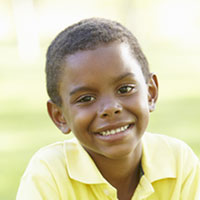Speech and Language Development Milestones
- Laughs, gurgles, coos with familiar people
- Babbles for attention
- Experiments with sounds /ba/ /da/ /ka/ /ma/
- Interacts with adults using vocalization and eye contact
- Searches for a speaker/turns head toward a voice
- Discriminates between threatening and friendly voices
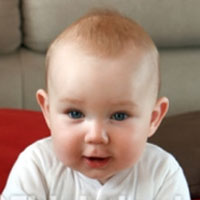
- Says 3-5 words including mama/dada spontaneously
- Imitates the names of familiar objects
- Imitates sound combinations
- Recognizes the names of a few familiar objects
- Looks at person saying child’s name
- Follows simple directions occasionally

- Says 50+ meaningful words.
- Uses words to make wants/needs known (ie: “more” “up” “cookie” “juice”)
- Imitates familiar words overheard in conversation
- May begin combining words into 2-word phrases (ie: “more cookie”)
- Identifies 3-5 body parts
- Brings familiar object from another room on request (ie: “Go get your cup.”)
- Follows simple directions consistently
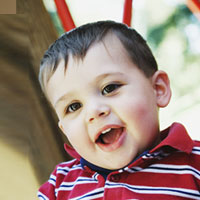
- Uses 200+ words
- Combines words into 2 and some 3-word utterances
- Uses a few early pronouns (ie: I, me, mine)
- Begins asking ‘wh’ questions
- Identifies pictures when named by an adult
- Chooses objects from a large group on request
- Understands simple questions and commands

- Uses 400+ words
- Refers to self by pronoun consistently
- Uses 2 sentence types (ie: statement and question)
- Responds to simple questions using words
- Answers yes/no questions, but may confuse ‘yes’ versus ‘no’
- Understands early concepts (ie: big/little, “one”)
- Parallel play predominates
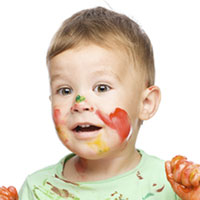
- Uses verb forms and modifiers (adjectives) in phrases/sentences
- Expresses physical states (ie: hungry, tired, thirsty)
- Unfamiliar listeners are able to understand child 85% of the time
- Answers yes/no questions correctly
- Beginning to understand some prepositions
- Follows more complex directions
- Beginning interest in cooperative play with small groups
- Imaginative play begins to emerge
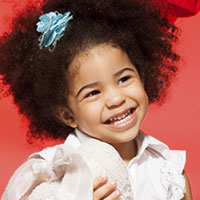
- Child is mostly intelligible to unfamiliar listeners in connected speech
- Consistently combines 4-5 words in sentences and uses complex sentences frequently
- Begins to use “Is” at the beginning of questions
- Regular plural forms are consistent; irregular plural forms are emerging
- Uses simple past tense verbs
- Participates in detailed conversations
- Appropriately answers “what if” questions
- Follows commands involving 3 actions
- Makes conversational “repairs” when the listener has not understood
- Plays cooperatively in groups of 2-3 children; chooses companions of own sex
- Suggests turns and begins to share, but is often bossy in play

- Knows/comprehends majority of location prepositions
- Correctly uses “what do…/does…/did…” questions
- Uses more complex pronouns (our, they, their)
- Speaks with inflection when describing event or action
- Uses possessive pronouns
- Combines 5-8 words in complex sentences
- Able to re-tell a long story accurately
- Understands complex descriptive concepts (i.e.: heavy/light, loud/soft)
- Uses several effective utterance to discuss emotions and feeling
- Plays in groups of 2-5; friendships become stronger

- Understands concepts of time (am/pm, yesterday/today)
- Uses all pronouns correctly and consistently
- Emerging use of adverbial word endings (slowLY, fastER)
- Syntax/grammar rules are followed majority of time
- Plans sequence of pretend events in play and uses props/language to develop a theme
- Has the majority of consonant sounds mastered and is intelligible to unfamiliar listeners without interpretation (MAY still substitute w/r)
- Can state similarities and differences of objects
